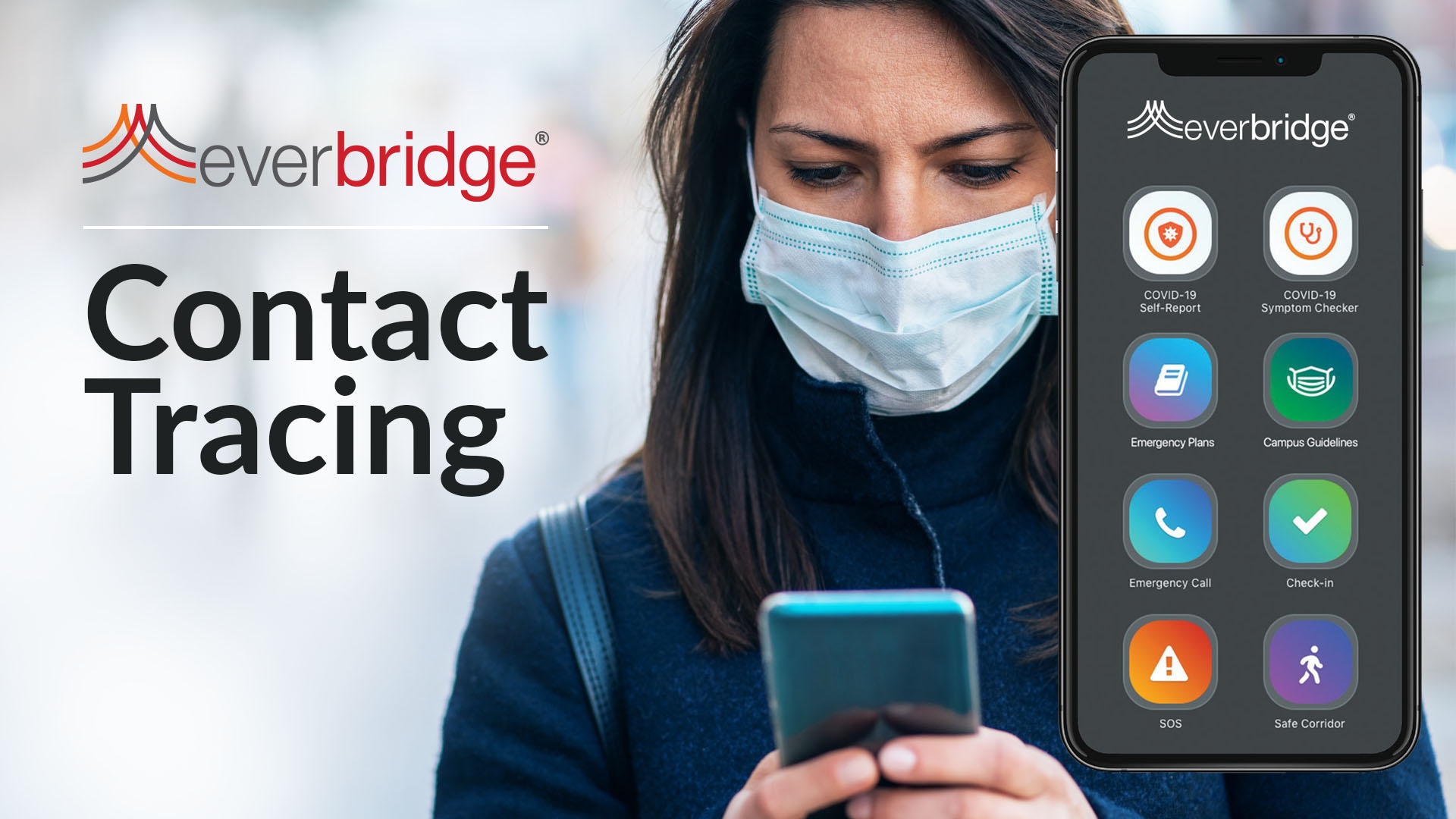Contact Tracing, Vital to the Safe Return to Work and Campuses, Needs a Boost from Tech-led Innovation

By Imad Mouline, CTO, Everbridge
Contact tracing remains essential to get people back to work, especially as some countries negotiate a second wave of COVID-19. Unfortunately, confusion around—or ineffectiveness of—contact tracing means that governments and organizations face an uphill battle in effective implementation. Everbridge Chief Technology Officer Imad Mouline joined Sky News recently and spoke about contact tracing’s role in the reintegration of offices and public spaces, what has not worked so far, and why we think there exists a better way.
Generally, contact tracing approaches fall into two categories: 1) manual tracing using case management tools, or 2) automated tracking using a variety of standalone opt-in-based mobile apps. Each of these methods have some merit, but also major pitfalls.
The manual approach typically involves a state agency that hires numerous people as contact tracers. These employees call contacts of newly diagnosed patients, record their information in a customer relationship management (CRM) system, and provide them with information about testing and other procedures following state guidelines, but this approach remains incredibly slow, expensive, resource-intensive, and not applicable for every vertical or industry.
A mobile app-based contact tracing approach would seem more effective at first glance. This framework allows smartphones to constantly record their proximity to other smartphones using Bluetooth Low Energy (BLE). Then it alerts smartphone owners when they come near someone who reports testing positive. When it works, this approach can be an effective method – but like all app-based frameworks, Bluetooth-based apps often fail unless a large percentage of the population has installed them. This remains the major sticking point as governments and companies try to implement contact tracing through proximity-based apps: they simply cannot get enough people to download and use them. Even when people do download these apps in large numbers, privacy concerns may intervene to prevent the apps from working as designed, as users who do not trust such apps remain far less likely to turn on the location tracking on their mobile devices necessary to conduct effective contact tracing.
State-sponsored, self-reporting apps also fall into this category and have largely failed for similar reasons. Even when governments mandate their download, adoption remains limited without any incentive for people to self-report their status or symptoms.
Contact Tracing: A Better Way Forward
Fortunately, a novel multifaceted approach now offers a more effective path forward during the COVID-19 pandemic and beyond. This new approach leverages location-based tracing data that an organization typically already collects, from badge swipes and meeting calendars to GPS signals and Wi-Fi location monitoring, to identify anyone in their company who might have come into contact with someone infected with COVID-19, while safeguarding user privacy.
Most importantly, this method does not require individuals to take an action, such as downloading an app, which means the organization can ensure 100% adherence. For governments that are struggling to encourage whole populations to download contact tracing apps, this approach could prove instrumental as nations continue to come out of lockdown and social distancing restrictions are lifted, especially when used in concert with public warning solutions that help governments and public authorities keep people safe before, during and after critical events through multi-modal communication.
Location and proximity-based tracing in combination with real-time risk intelligence and public warning remains the basis of Everbridge’s own contact tracing solution. This more comprehensive, multifaceted framework complements others, comprising more than just exposure, identification, and notification. It includes tools to help minimize or even avoid exposure, identify symptoms, and report test results, as well as automating follow-ups and follow-through for each of these items.
These tools may include features to:
- Automate the process of temperature checking with thermal cameras in order to allow or deny entry to a building, and trigger follow-on alerts if an individual with a fever is detected;
- Monitor building, floor and room capacity thresholds by integrating with badge access functionality;
- Regulate temperature, humidity and ventilation according to local and national guidelines by integrating with building management systems; and
- Check for room density, physical distancing and PPE compliance through video analytics.
Today, intelligent software-based automation exists to supplement or complement existing manual contact tracing efforts to improve accuracy and speed, while substantially reducing overall costs. Using innovative tech in this way also allows for the use of multiple sources of public and available third-party data to provide more comprehensive information in a timely manner, without requiring intensive manual tracing or relying exclusively on an opt-in approach. This method of contact tracing can be used to enforce social distancing in enterprises and on premises through automation, thereby lowering the burden for authorities and making public places safer.
For most businesses looking at the challenge of going back to work, a technology-led end-to-end contact tracing solution allows for the rapid identification of infection risk and automates the steps to ensure employee safety and business continuity.
This approach can be used by governments as well. In an era when nations are looking at how to safeguard their people from future crises and develop effective public warning systems that reach citizens and visitors alike, an effective contact-tracing solution exemplifies one tool that can proactively help them prepare for future waves of COVID-19.
While there exists no single contact tracing approach that will be 100% effective all of the time, having multiple approaches working collaboratively represents the most effective way forward. At a time when lives and economies depend on getting people back to work safely and restarting business, solving this challenge must be our number one priority.
